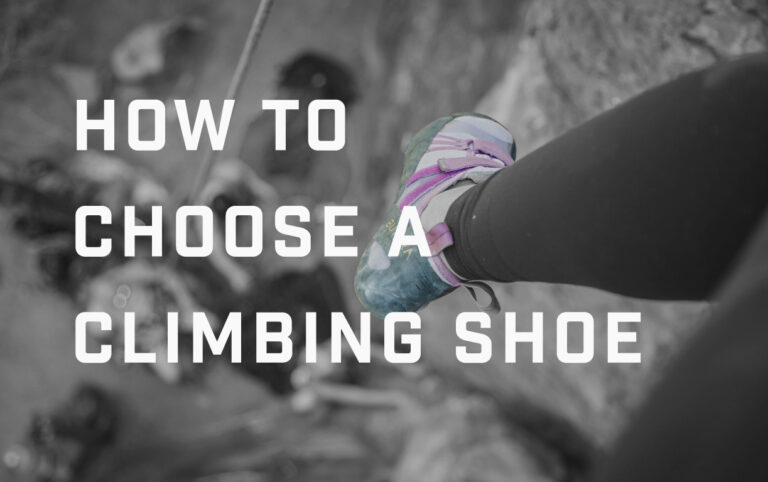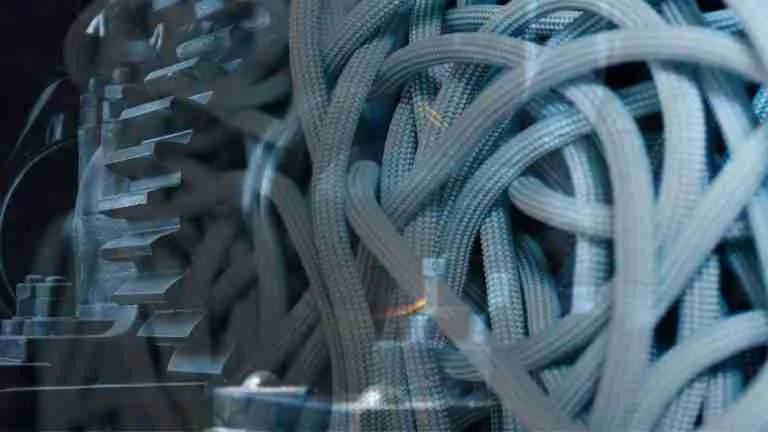Hangboards. Fingerboards. Campus Boards. Moonboards. Kilterboards.
Let’s clear up the confusion.
What exactly is the difference? Find out below.
Plus, learn what they are, what each one is best for, and where to find them.
The Difference Between Types Of Climbing Training Boards
Are you a rock climber looking for new ways to take your climbing to the next grade?
If so, then you’ve probably heard of or tried out a couple of different types of ‘boards’ for climbing training.
What exactly the difference is between each one and what they are intended for can be confusing.
We are going to look at the main differences and how each type of board can help you train different components of your rock climbing aresenal.
Hangboards
Hangboards are a time tested way to increase finger strength for climbers.
We have talked in-depth before about hangboard technique and types of workouts.
Here is what a hangboard might like:

As the name implies, hang boards are for hanging. They are not intended for pull-ups, although many people do use them for pullups (not recommended).
Hangboards are made of either plastic or wood.
Wood is lighter, easier on the skin, and looks nice but is usually slightly more difficult to hang from; making it a better choice for advanced climbers.
Boards have different sized edges, pockets, slopers and sometimes pinches. Smaller edges mean increased difficulty.
A climber hangs statically from the hold for prescribed intervals of time.
Most common (for intermediate-advanced level climbers) is a 7:3:6 interval.
This indicates: Hang 7 seconds, rest 3 seconds, repeat x 6 for 1 complete set.
On average, a hangboard workout will consist of 6 sets with 3-5 minutes rest between sets.
Hangboard workouts generally last anywhere from 20-60 minutes and can be done with body weight, with added weight, or with a pulley system that helps remove weight.
Consistent hangboarding is one of the most efficient ways a climber can increase finger strength over time.
Finding the right hangboard workout for your level of ability is critical to success.
While hang boards are extremely effective they do present ample opportunity for hard to heal tendon injuries.
Ensure that you inform yourself about proper technique before starting a hangboard routine.
What Are Hangboards Good For?
As discussed above, hangboards are a systematic way to build hard to target finger strength over time.
Fingers do not have muscles, rather their strength is determined by tendons, ligaments, and the muscles those structures are attached to in the forearm and palm.
Relative to muscles, tendons are hard to build up.
Climbing a lot will help with this of course but at somepoint in your climbing career—as the holds get smaller and the terrain gets steeper—you will find yourself unable to advance not because of technique or over all strength, but because of inadequate grip strength.
This is where hangboards come in.
Scientific studies have shown proper hangboard training to dramatically increase finger tendon strength over time.
So if you want to take your climbing to the next grade, incorporating hangboard training is a must.
Hangboard vs Fingerboard
Simply put; they are the same thing.
The names are often used interchangeably but hangboard is the more distinct term.
When you Google ‘fingerboard’ you are more likely to get results for tiny skateboards than climbing equipment.
Still, many climbers use both terms so its worth knowing.
Where To Find One
Almost every modern climbing gym has a training area with hangboards and campus boards. Some are even leveling up with Moonboards (more on those below).
If you want to get your own for home, here are few of our top hangboard recommendations:
- Best Beginner Hangboard: Metolius Project
- Best Intermediate Hangboard: Trango Rock Prodigy
- Best Advanced Hangboard: Beastmaker 2000
Campusboards
While hangboards build core finger strength, campus board help build up explosive strength as well as what is commonly referred to as ‘contact’ strength.
Contact strength is your ability to latch onto a hold under tension or speed.
For example, when you are trying really hard on a route and you throw for the next hold.
Here is Adam Ondra giving us an important warning against injury and showing us how a superhero trains campus board:
What Are They Good For?
Campus boards are incredibly efficient tools for training explosiveness and dynamic grip strength.
That said, campus board training has a high probability of injury if done too early or impropoerly.
They should be reserved for intermediate to advanced level climbers who are already familiar with hangboard training.
Similar to hangboarding there are some basic techniques to help prevent injury:
- Start with the largest edge possible
- Avoid pinching with your thumb
- Use open hand grip
- Keep your shoulders engaged and back
- Elbows slightly bent
- Core engaged
Campusboards are vertical to overhanging pieces of wall with equally spaced horizontal edges.
A climber starts at the bottom and works their way up in intervals of controlled reaches.
Campus board workout usually consist of an up-down interval or an up then hang and drop off.
For example, starting on the bottom edge with both hands, you reach up 2 edges then down 2. With your other hand do the same thing, then repeat.
Or, from a starting edge, reach one hand up 2 then the other hand up 2 until the top.
In the video below Mercedes Pollmeier gives one of the best introductions to campus boards. She also has a training program available on her website (worth checking out):
Where Did They Come From?
The campus board was invented by legendary 80s/90s climber Wolfgang Gullich while training for the earth-shattering first ascent (still one of the world’s hardest sport routes) of Action Directe (9a/5.14d).
Never heard of him?
Have you ever seen Cliffhanger? Him and Ron Kauk were stunt doubles for Stallone.
Gullich is responsible for taking rock climbing into the 5.14’s, and he’s also the guy who, after recovering from a fall that broke his back, became the first person to free solo Separate Reality in Yosemite.
Yeah, that guy.
Tragically he died young after a car accident. But his legacy lives on in one the most effective rock climbing training systems there is—the campus board.
Where To Find One
For people with a lot of space in their homes, you can easily make your own campus board.
All you need is a large blank wall and something structural to screw the horizontal edges into.
You can make your own edges or purchase sets like the Wood Grips by Metolius.
For most climbers, however, the campusboard is something you train on at a gym.
Wherever you find one, campusboards are effective and efficient training apparatuses for increasing dynamic finger strength.
Only incorporate campusboards into your training program once you are familiar with hangboarding.
Moonboards
As per the company website, a Moonboard is “A standardized interactive training wall that connects the global community through shared problems and competitive performance rankings.”
Moonboards are 25°-40° overhanging walls featuring a standardized set of holds.
The holds on the wall are set to pre-mapped arrangements created by Moonboard.
Each hold position has a tiny LED light beneath it that is illuminated through the use of a mobile app.
When you choose a route, its path is illuminated on the wall.
Moonboard’s app has a near unlimited selection of routes to choose from ranging from mid-level to elite.
This allows a climber to constantly find new routes, compare themselves to other climbers around the world, and set their wall to a new configuration as desired.
It is worth noting that Moonboards are geared towards high-intermediate to advanced climbers.
While they do offer three different sets of holds, even the easiest yellow holds and routes are for experienced climbers.
Where Did Moonboards Come From?
As you might have guessed from the name, Moonboards were brought to market by a climber named Ben Moon.
Moon and a handful of other UK climbing legends developed their own indoor training boards with routes up to V13.
Later, the boards they created were standardized and the Moonboard was born.
What Are They Good For?
First, the real beauty of the Moonboard and probably why they have seen such a surge in popularity, is in the mobile app.
The Moonboard app connects people and that is something that never gets old.
Within the app new routes are rated by the community and users can find their favorite climbers or friends.
Want to see how you add up to Alexander Megos or Nina Wiliams, just log in and light up one of their routes.
Second, because of the specific holds employed, the angle of the board, and a global community of setters; the Moonboard is one of the best training tools to mimic outdoor climbing.
Hangboards and campus boards are great for building strength, but the Moonboard helps you put it all together in a standardized environment that prepares you for the real rock.
Where To Find A Moonboard
Because they are expensive, in the thousands of dollars, you will usually find Moonboards at climbing gyms.
Thanks to their increasing popularity, chances are a climbing gym near you has one.
If you can get your fingers on one, Moonboards are an incredibly effective way to train hard indoors so you can climb even harder outdoors.
Kilterboards
Lemur Design is a Canadian company founded and operated by engineers.

Their Kilter Board is almost the same things as a Moonboard; almost.
The main difference is that the Kilter Board can change its angle from 0-70° at the touch of a button. This makes the board a more accessible option for all levels of climber.
Another difference between the Kilter Board and the Moonboard is the lighting system.
Moonboards use LEDs beneath each hold.
Kilterboards have their own holds made with a base that lights up around its entire circumference.
This way a climber is never searching for the right hold mid route as the light is visible from all angles.
While this technology makes things easier it also offers a drawback.
If you decide not to use the company’s proprietary holds you will not have any lighting to indicate route path on your Kilterboard.
Whereas with a Moonboard, if you want to use some non-Moonboard holds or homemade holds, you can still create and illuminate your own routes.
Kilterboards are new and gaining popularity. Expect to see them in climbing gyms and other spaces in the near future.
Conclusion
There are many different types of ‘boards’ to help you train for rock climbing.
Training boards allow a climber to target finger strength.
Which board you choose will depend on your goals and level of climbing, space, time, and cost.
The most space and cost efficient solution for training finger strength is a hangboard.
Campusboards take up more space and are better for building explosive strength and contact strength.
Moonboards combine difficult holds with crowdsourced route setting to create one of the best replicators of outdoor routes in an indoor setting.
Because they are big and expensive, the average climber will only use a Moonboard at a climbing gym or similar.
Kilterboards work off the Moonboard design but offer a greater range of wall angles (0-70° vs 25 or 40° for the Moonboard).
Additionally, they fixed the problem with route lighting where you can’t see indicator lights from certain angles.
Kilter created holds with an illuminated base so that indicator lights can be seen from 360°.
Again, these are large and expensive options so are more likely seen in gym settings.
Kilter boards are new and gaining popularity as they offer greater flexibility for beginner level climbers than any other training board option.
Which is your favorite training board?




